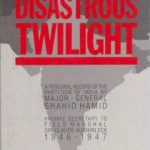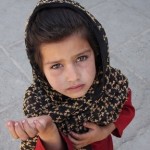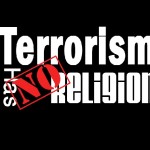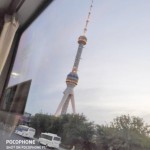Dr. S. Bushra Batool
According to the World Economic Forum’s Global Risks Report 2024, interstate armed conflict is recognized as one of the biggest risks facing the world. The year 2024 marks 75 years to the formation of the North Atlantic Treaty Organization (NATO), a political and military alliance currently made up of 32 countries. The NATO summit, celebrating 75 years to its formation, was held in Washington. Among other issues, the summit was dominated by the Russia-Ukraine war discussions.
But why in a world where there are many social, political, economic and climate-induced issues to discuss, especially when the entire Middle East in engulfed in a deadly war, Russia is on the top agenda? This could be well understood with the historical perspective. NATO was born on April 4, 1949, when 12 countries from Western Europe and North America came together to sign the North Atlantic Treaty. It was formed on the principle of collective defense which means that an attack against one Ally is considered as an attack against all allies. This principle is enshrined in Article 5 of the North Atlantic Treaty.
The NATO-Russia rivalry goes back to the time of the Cold War between the US and Soviet Union when under this collective security mechanism, members committed to defend each other through political and military means and counter the threat posed by the Soviet-led communist world. NATO is believed to be an alliance not to fight but to prevent wars. Apparently, there were no major wars after the Second World War but we also saw a number of proxy wars; the Vietnam War and the Korean War are to name a few.
Although, tensions between the two arch-rivals; were reduced after the end of the Cold War with the disintegration of the Soviet Union, however, Russia, the successor of the Soviet Union, has always been skeptical about its security westwards. Russia’s leadership, particularly President Vladimir Putin’s concern that NATO wasn’t sensitive to Russian security needs and was violating its commitment not to move “an inch eastwards” is still valid to date, and in Russia’s view, Moscow’s main concern that lethal missiles should not be deployed in states bordering Russia was never addressed. Hence, the Russian annexation of Crimea and the events that followed post-2014 is the prime example of tit-for-tat and continued the tug of war.
With the full-scale military invasion of Russia in Ukraine in February 2022, NATO suspended cooperation with Russia while deploying multinational battle groups in the Baltic States and Poland. The NATO countries declared Russia “a direct threat to Euro-Atlantic security” and decided to lend full support to Ukraine’s war effort.
However, fearing global escalation, NATO chose not to deploy its own troops in Ukraine. To infuriate Russia further, NATO recognized Bosnia, Georgia, and Ukraine as “aspiring members”. Russia’s invasion of Ukraine in 2022 prompted Finland and Sweden to join the alliance in 2023 and in 2024 respectively. It is important to note that Sweden abandoned its 200-year-old neutrality policy and sought greater security within NATO.
Both Sweden and Finland, which share a 1,340km border with Russia, dropped their traditional stance of neutrality and applied to join NATO after the Russian invasion of Ukraine. This is the biggest expansion of NATO since members joined from Eastern Europe after the collapse of the Soviet Union in 1991.
Hence it is obvious why the summit declaration condemned Russia for its brutal war of aggression against Ukraine, terming it to be the latter’s right of self-defense to be provided with all the necessary security arrangements against Russia.
Notwithstanding, NATO allies are extending full solidarity with Ukraine, pledging long-term security assistance for Ukraine, including a new baseline funding of 40 billion euros within the next year, Ukraine’s admission to NATO as a full-fledged member is yet to be seen. President Volodymyr Zelenskiy had also received assurances at the Vilnius Summit in the Lithuanian capital in July 2023, where allies reconfirmed their commitment to make Ukraine a member, but in vain.
After Finland’s and Sweden’s membership, and in spite of the fact that at the 2024 Washington Summit, based on decisions taken at the 2022 Madrid Summit and 2023 Vilnius Summit, allies reaffirmed that Ukraine’s future is in NATO, Ukraine is left out of the membership zone, which has the utmost security concern from Russia. This reveals NATO members’ hesitance to admit Ukraine. It is believed that the Ukraine is considered in Europe as a buffer state between west and Russia.
NATO has deployed combat-ready forces on its eastern flank; over 500,000 forces are in high readiness. The declaration also announced that the alliance would take further steps to support Ukraine’s “irreversible path to full Euro-Atlantic integration”.
Dozens of foreign policy experts are calling on NATO members to avoid advancing toward Ukrainian membership at the alliance’s upcoming summit, warning that it would endanger the U.S. and allies and rupture the coalition. This is also visible when in the last year 2023’s NATO summit, the US focused more on improving Ukraine’s self-defense capabilities rather than addressing the country’s potential membership in NATO.
Upon Ukraine’s membership to NATO and in the wake of a Russian attack, it would trigger Article 5, calling on members to rush to collective defense. Further, it would bring the world’s two leading nuclear powers to direct confrontation once again and play into Russian leader Vladimir Putin’s narrative that it is Moscow versus the West.
Debates are ongoing about the future of Ukraine in NATO and what the US and its allies would offer Ukraine about handling and ensuring its security. It is imperative for Ukraine to secure a formal security arrangement, however, the Western skepticism about the country’s admission into NATO cannot be ruled out, deeming it a security challenge for the alliance and its members.
The author is a Research Officer at Rabita Forum International (RFI).







